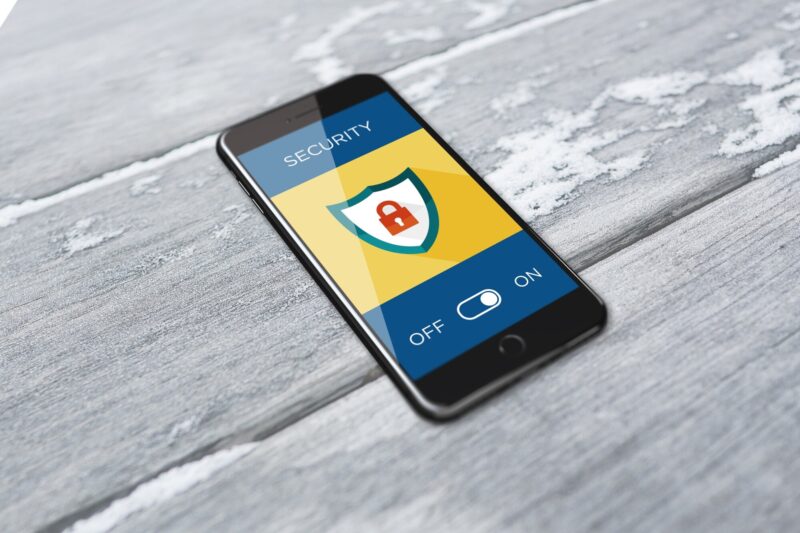Mobile banking is everywhere. According to recent statistics, over a third of American households primarily access their bank accounts through their smartphone.
However, mobile banking isn’t without its risks, just like online banking. You need to practice good mobile banking security if you want to keep your private details private.
Yet what does good mobile banking security actually look like? What steps do you need to take to keep your bank account safe?
In this guide, we’re going to take a look at how you can lockdown your bank account and the best mobile security practices.
Are you ready to learn more and become more resistant to hacks and fraud? Then read on!
1. Beware of Phishing
Do you know what phishing is? In essence, it’s where a cybercriminal emails you purporting to be from a company or individual that you trust and ask for personal details that they can use to access your account.
Sometimes, a phishing email may come to you that purports to be from a service that you’ve never used. For instance, you may get an email purporting to be from PayPal, asking you to navigate to a fake webpage and enter your Paypal login details. This kind of fraud is easy to spot.
What isn’t so easy to spot is targeted phishing, also known as spearphishing. If there’s a data breach at your bank and email addresses are exposed, criminals may target these specifically. This can lead to a much more believable email, especially as phishing emails often use official letterheads and may spoof email addresses.
If you get an email from your bank and it asks for personal details, don’t ever hand them over. No legitimate organization will ever ask for details like these. If you’re in any doubt about an email, call your bank and ask them whether they sent it.
2. Use Strong Passwords
Using strong passwords for your mobile and online banking is essential. These passwords are often the same, so you need to ensure that you have a strong password that is very hard to crack.
Your password should include letters, numbers, and special characters. If it helps you, you can use a password manager to create a very strong password that the manager will then remember for you.
This is vital because, as we mentioned, your password will often be the same for your app and your online banking. For instance, let’s say that you bank with Farmers Bank Idaho. When you log in on farmersbankidaho.com, you’ll use the same password as you do on the app: this means that the password is exposed to security risks on two different devices, so it needs to be very strong.
3. Use 2FA if Available
If it’s available on your particular banking app, you should use 2FA (two-factor authentication). This is a security technology that makes you verify your login attempt, which tightens security dramatically.
Here’s how 2FA works: you attempt to log in to your bank account with the correct password and correct username. To ensure it’s really you, the bank will send a text message to your phone with a single-use code. You’ll then need to enter the single-use code on the app to verify the login attempt.
This bolsters security because it means that if a hacker wanted to log in to your bank account, they’d need your username, password, and access to your phone number (or the ability to intercept your messages). It also alerts you to the fact that someone has tried to hack your account, which means you can take the appropriate measures to secure your account.
4. Avoid Using Your Mobile App on Public Wifi
Public wifi is really convenient, isn’t it? Being able to hop online at a coffee shop or a bar is great, but it also comes with some security risks. Public wifi is often unsecured or because you can get the password with a cheap purchase at most, very weakly secured.
A hacker can sit on the network and intercept data as it travels between your device and its destination, which is known as a man-in-the-middle attack. Using your mobile banking app on public wifi is thus incredibly risky, as your sensitive data can be intercepted fairly easily.
You should only ever use your mobile banking app on secured, private wifi or on mobile data, which is encrypted as a matter of course.
5. Ensure You’re Using the Right App
When you download the mobile banking app for your bank, you need to make sure that it’s the real deal. To do this, take a look at the app store page for the app in question and see how many times it’s been downloaded and the number of reviews it has. An official app will likely have thousands of downloads, if not more.
However, making sure that you have the official app isn’t the only thing that you need to do. You should also make sure that you keep the app up to date at all times.
When there’s an app update, it’s easy to ignore it, but these updates are usually there to patch up security holes that have just been discovered. If you keep using the old app, you’re exposing your account to a bigger risk of attack.
Use These Tips to Make Mobile Banking Safer
Put these mobile banking security tips into practice and you’ll be able to enjoy all the convenience of mobile banking without putting your details at risk. Whether you’re a veteran of mobile banking or have just downloaded your first app, we hope that you’ve found these tips helpful.
If you’d like to read more helpful and informative articles like this one, then check out the rest of our blog today!





Leave a Reply
You must be logged in to post a comment.